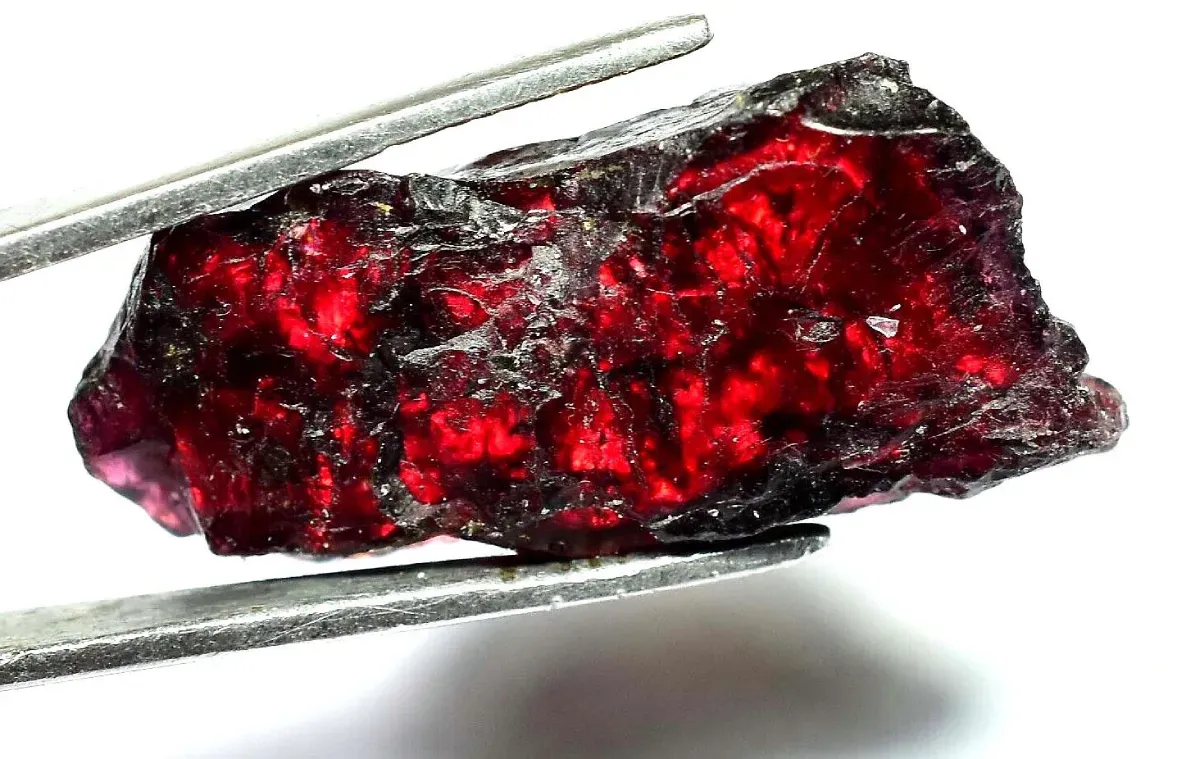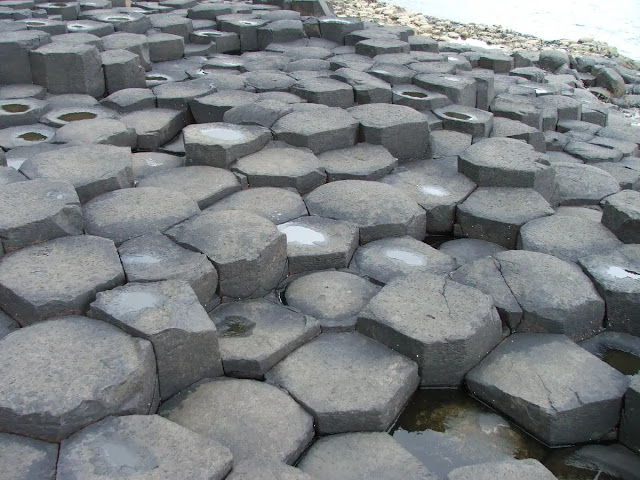Painite: The Rarest Gemstones in the World
Painite
Painite is the rarest gemstone in the world and one of the most unique minerals on Earth. Known for its striking orange-red to brownish-red color and distinctive crystal structure, it was first discovered in Myanmar (formerly Burma) in the 1950s. This complex borosilicate mineral has the chemical formula CaZrAl₉O₁₅(BO₃) and has captivated mineralogists, collectors, and gem enthusiasts alike due to its beauty and scarcity.
Only a few hundred painite crystals have ever been found, most of which are quite small, with only about two dozen being of gem quality. The largest painite crystal discovered measures just 2.5 centimeters in length. Its extreme rarity makes painite one of the most expensive gem minerals in the world.
Painite is found in only a few places in the world, including Myanmar, and Madagascar. It is typically found in pegmatites, which are coarse-grained igneous rocks. Painite is often found associated with other rare minerals, such as topaz, beryl, and zircon.
Painite is a very important mineral for scientists because it is one of the few minerals that contains both boron and zirconium. Boron and zirconium are both very rare elements, and they are not typically found together in other minerals. The discovery of painite helped scientists to better understand the formation of these two elements.
Painite was first discovered in 1957 by British gemologist Arthur C.D. Pain, after whom it was named. The first specimen was found in the Mogok region of Myanmar, and was originally misidentified as a ruby. It was not until 1962 that painite was officially recognized as a new mineral species.
Painite is also a very important mineral for collectors. Because of its rarity, painite is considered to be a very valuable gem. However, painite is also very difficult to find, and most collectors will never have the opportunity to own a painite crystal.
Scientific classification of Painite
Painite is classified as a borosilicate mineral. It belongs to the pyroxene group of minerals, which are nesosilicates. Nesosilicates are a type of silicate mineral that contains only one type of tetrahedral (SiO4)4- unit. Painite is a rare mineral, and it is the only known mineral that contains both boron and zirconium.
 |
| Natural Painite from Madagascar |
Why is painite so rare?
Here are some additional reasons why painite is so rare:
The chemical composition of painite is unique. The conditions required for painite to form are very specific. The temperature and pressure need to be just right, and Painite is the only mineral that contains both zirconium and boron. These two elements do not normally associate with each other in nature, so it is very rare to find them bonded together in a crystal.
Painite is found in very small quantities. The crystals of painite that have been found are typically very small, often measuring only a few millimeters in size. This makes it difficult to find enough painite to cut into a gemstone.
Painite is often altered by other minerals. The crystals of painite that have been found are often altered by other minerals, such as rutile and hematite. This can make it difficult to identify painite and can also reduce its value.
Limited Geographic Occurrence: Painite has so far only been found in a handful of locations globally, primarily in Myanmar.
Properties of Painite
Composition: CaZrAl₉(BO₃)O₁₅, Painite belongs to the borate mineral class, with a unique combination of calcium, zirconium, aluminum, oxygen, and boron atoms arranged in a specific crystal structure. This composition contributes to its rarity as zirconium and boron rarely occur together in the necessary quantities for Painite formation.
Color: Red, Brownish-Orange, Orange-Red, Trace elements like chromium and vanadium within the crystal structure are responsible for Painite's fiery hues. Unlike some gemstones with a single dominant color, Painite can exhibit variations within its color range.
Transparency: Transparent to Translucent, The clarity of Painite can vary. Transparent stones allow light to pass through completely, showcasing the full depth of color, while translucent stones allow some light passage, creating a more diffused appearance. Transparency is often linked to the presence of inclusions, which can affect light transmission.
Luster: Vitreous, Painite possesses a vitreous luster, resembling the glassy shine of high-quality glass. This luster adds to the gemstone's brilliance and desirability.
Crystal System: Hexagonal, Painite crystals typically belong to the hexagonal crystal system, characterized by a threefold rotational symmetry axis. However, some crystals can exhibit an orthorhombic system with a different internal arrangement.
Streak: White, When scratched against a streak plate, Painite leaves a white powder residue. This property helps gemologists differentiate Painite from other red gemstones.
Hardness: 8 to 8.5 Mohs scale, Painite boasts an impressive hardness rating on the Mohs scale, making it highly resistant to scratches and abrasions. This exceptional hardness (comparable to some sapphires) allows Painite to be used in jewelry applications.
Cleavage: None Determined, Painite does not exhibit a preferred direction of breakage, unlike some minerals that cleave readily along specific planes. This lack of cleavage can be advantageous for faceting Painite into gemstones.
Fracture: Conchoidal, When Painite does break, it typically fractures with smooth, curved surfaces resembling a seashell. This conchoidal fracture is a common characteristic of many glassy materials.
Habits and Forms: Short Prismatic or Rounded Grains, Painite crystals are not particularly diverse in form. They usually occur as short, prismatic shapes within the hexagonal system. In some instances, rounded grains can also be found. The growth environment and available space influence the specific crystal habit.
Density (Specific Gravity): Around 4.01 - 4.03 g/cm³, Painite is denser than most common rocks but lighter than many metals. This specific gravity value helps in identification and can be measured with specialized equipment.
Tenacity: Brittle, Despite its impressive hardness, Painite can be brittle under forceful impact. This means it can chip or shatter if struck with significant force. Careful handling is recommended for Painite gemstones.
Solubility: Insoluble, Painite is highly resistant to dissolving in water and most common acids. This makes it a relatively stable gemstone for jewelry use.
Magnetism: Not Magnetic, Painite does not exhibit any magnetic properties. This characteristic can be helpful in distinguishing it from certain minerals that may be attracted to magnets.
Fluorescence: Weak Reddish or Yellowish, In some cases, Painite can exhibit a weak fluorescence under ultraviolet light, appearing faintly reddish or yellowish. This fluorescence is not a defining characteristic but can be an interesting additional feature.
Pleochroism: Subtle Color Change, While not as dramatic as Alexandrite, some Painite crystals exhibit a subtle pleochroism. This means the color may appear slightly more reddish in daylight and brownish under incandescent light. The viewing angle can also influence the perceived color.
Refractive Index: 1.787-1.816, The refractive index is a measure of how light bends as it passes through a material. Painite's refractive index is relatively high, contributing to its brilliance and fire.
Inclusions: Painite crystals can sometimes contain inclusions, which are foreign materials trapped within the gemstone during its formation. These inclusions can affect the transparency, brilliance, and overall value of the stone. Painite with minimal inclusions is generally more desirable for faceting into gemstones.
 |
| Painite Crystal from Myanmar |
Occurrence of Painite
Painite is typically found in pegmatites, which are coarse-grained igneous rocks. Painite is often found associated with other rare minerals, such as topaz, beryl, and zircon.
Painite is an incredibly rare borate mineral, and its occurrence is very limited geographically. The vast majority of painite comes from just one location:
Myanmar (Burma): Specifically, the Mogok Valley near Ohngaing village in Myanmar is the world's primary source of painite. This region is known for its rich gemstone deposits, and the specific geological conditions there seem to be ideal for painite formation.
There have been some additional discoveries of painite in:
Madagascar: Small deposits of painite have been found in Madagascar, but these are far less significant than the finds in Myanmar.
China: Even scarcer finds of painite have been documented in China.
Economic importance
Painite is a very rare mineral, and it is therefore very valuable. The largest painite crystal ever found is only about 2.5 centimeters in length, and it is worth millions of dollars. Painite is a very important mineral for collectors, and it is also used in jewelry.
Painite Uses
Jewelry and Collector's Gemstone: Due to its captivating beauty, exceptional hardness, and extreme rarity, painite is primarily used as a gemstone in high-end jewelry. These factors make it a prized possession for collectors and enthusiasts.
Metaphysical Beliefs: Some believe painite possesses metaphysical properties and benefits. Here are some examples of these beliefs:
Chakra Healing: It's believed painite can act as a chakra opener, promoting mental, emotional, and spiritual well-being.
Increased Motivation: Some associate painite with red gemstones, suggesting it can enhance passion, vitality, and motivation.
Grounding and Stability: Painite with brown tones is thought to possess the grounding and stability benefits associated with brown gemstones.
Facts about Painite
- The name "painite" is pronounced "PYE-nite."
- Painite is very valuable, and a single carat of painite can cost anywhere from $50,000 to $60,000.
- Painite is not often used in jewelry because of its rarity, but when it is used, it is often set in platinum or gold.
- Painite was once considered so rare that it was featured in the Guinness Book of World Records as the rarest mineral on Earth.
- Painite has some interesting historical and cultural significance, and it is also a popular subject of scientific study.
- The largest painite crystal ever found weighed 25 carats.
If you are lucky enough to ever see a painite in person, you will be witnessing one of the rarest and most beautiful gems in the world.




%20(1).webp)




